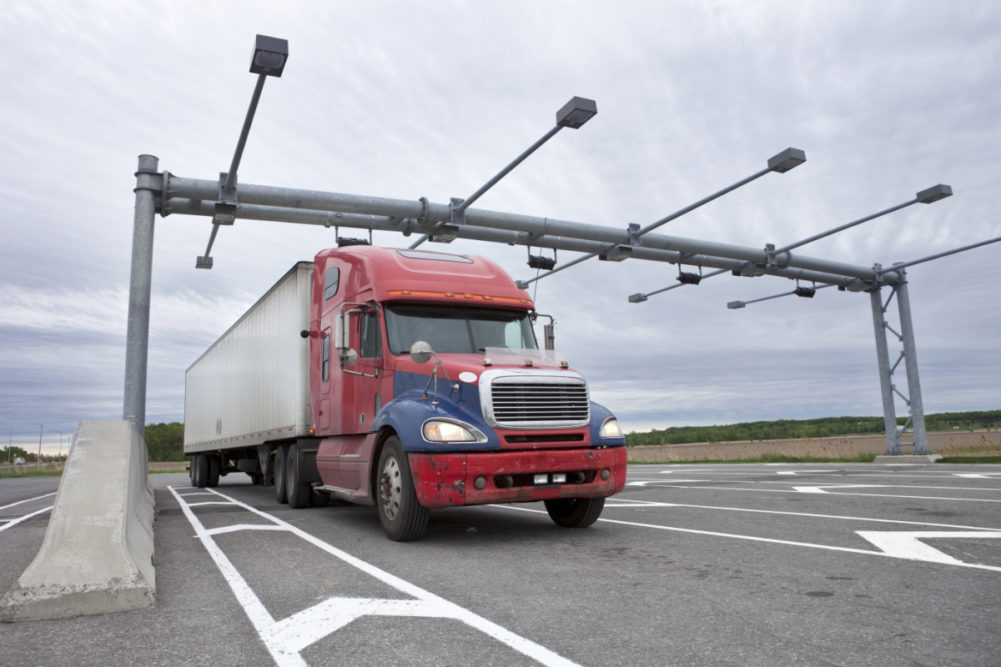House of Dispatch news
Blog
How Much Weight Can a Truck Carry?

Trucks play a vital role in transporting goods and materials across the country. From delivering everyday essentials to transporting heavy equipment, trucks are the workhorses of the transportation industry. One question that often arises is, “How much weight can a truck carry?” In this blog, we will explore the factors that determine a truck’s weight-carrying capacity, the different types of trucks, and safety considerations.
How Much Weight Can a Truck Carry: Understanding the Basics
To determine how much weight a truck can carry, several factors come into play. These factors include the truck’s configuration, axle capacity, suspension system, and legal weight restrictions. Let’s delve deeper into each of these aspects.
Truck Configuration
The configuration of a truck significantly impacts its weight-carrying capacity. Different types of trucks, such as semi-trucks, pickup trucks, dump trucks, dry vans, flatbeds, and reefers, have varying capabilities due to their design and intended purpose. Each truck type is specialized for specific transportation needs.
Axle Capacity
The axle capacity refers to the maximum weight a single axle on a truck can support. Trucks typically have multiple axles, and each axle has its weight limit. The total weight a truck can carry depends on the combined capacity of all its axles. Axle capacities are regulated by transportation authorities to ensure safety and prevent excessive wear on roads and bridges.
Suspension System
A truck’s suspension system plays a crucial role in its weight-carrying capacity. The suspension absorbs shocks and impacts from the road, helping to distribute the weight evenly across the axles. A well-maintained and properly adjusted suspension system enhances a truck’s stability and load-carrying capability.
Legal Weight Restrictions
Apart from the truck’s physical limitations, legal weight restrictions also dictate how much weight a truck can carry. Governments establish regulations to ensure road safety and protect infrastructure. These regulations specify maximum weight limits for different types of trucks, taking into account axle configurations, road conditions, and other factors. Violating these weight restrictions can result in fines and penalties.

Types of Trucks and Their Weight Capacities
Different types of trucks are designed for specific purposes and have varying weight-carrying capacities. Let’s take a closer look at some common types of trucks and their capabilities.
Dry Van Trucks
Dry van trucks are enclosed trailers used for transporting general freight. These trailers have no temperature control capabilities, making them suitable for non-perishable goods. The weight-carrying capacity of a dry van truck depends on its size and axle configuration. A typical 53-foot dry van trailer can carry up to 45,000 pounds of cargo.
Flatbed Trucks
Flatbed trucks feature an open-air platform without sides or a roof. They are commonly used for transporting oversized or irregularly shaped cargo, such as machinery, construction materials, and vehicles. The weight-carrying capacity of a flatbed truck depends on its size, axle configuration, and the strength of the flatbed. Depending on these factors, a flatbed truck can carry loads ranging from 10,000 to 40,000 pounds.
Reefer Trucks
Reefer trucks, also known as refrigerated trucks, are equipped with a temperature-controlled cargo area. They are used for transporting perishable goods, such as food and pharmaceuticals, that require specific temperature conditions. The weight-carrying capacity of a reefer truck is similar to that of a dry van truck, with a typical 53-foot reefer trailer able to carry up to 45,000 pounds of cargo.
Semi-Trucks
Semi-trucks, also known as tractor-trailers or big rigs, are commonly used for long-haul transportation. These heavy-duty trucks have a powerful engine and multiple axles, allowing them to carry substantial loads. The weight-carrying capacity of a semi-truck can range from 20,000 pounds for a single-axle truck to over 80,000 pounds for a fully loaded tractor-trailer.
Pickup Trucks
Pickup trucks are versatile vehicles used for personal and commercial purposes. Their weight-carrying capacity depends on various factors, such as their size, engine power, and suspension. Compact pickup trucks typically have a capacity of around 1,500 to 2,000 pounds, while full-size pickup trucks can carry loads ranging from 2,500 to 3,500 pounds.
Dump Trucks
Dump trucks are specialized vehicles designed for transporting loose materials, such as gravel, sand, and construction debris. Their weight-carrying capacity varies depending on the size and configuration of the truck. Smaller dump trucks may have a capacity of around 5 to 10 tons, while larger models can handle loads exceeding 25 tons.

Safety Considerations When Loading a Truck
While trucks are built to handle heavy loads, it is crucial to prioritize safety when loading them. Overloading a truck can lead to accidents, damage to the vehicle, and increased wear on roads. Here are some safety considerations to keep in mind:
- Weight Distribution: Ensure that the load is evenly distributed across the truck’s axles to maintain stability. Improper weight distribution can cause the truck to become imbalanced and difficult to maneuver.
- Securing the Load: Properly secure the load using straps, chains, or other suitable restraints to prevent shifting or falling during transit. This ensures the safety of the driver, other road users, and the cargo itself.
- Checking Weight Limits: Always check and comply with the legal weight limits set by transportation authorities. Exceeding these limits can result in fines, penalties, and compromised safety.
- Inspecting the Vehicle: Regularly inspect the truck’s tires, brakes, suspension, and other components to ensure they are in good working condition. Address any maintenance or repair needs promptly to minimize the risk of accidents.
Additionally, it’s important to consider the House of Dispatch’s role in the process. The House of Dispatch, also known as the dispatch office, plays a significant role in coordinating and managing the transportation of goods. They are responsible for assigning drivers and vehicles to specific loads, ensuring that the weight restrictions are adhered to, and overseeing the overall logistics of the operation.
When it comes to determining a truck’s weight-carrying capacity, the truck’s configuration is a key factor. This includes the truck’s gross vehicle weight rating (GVWR), which is the maximum weight that the truck can legally carry, including the weight of the truck itself, passengers, cargo, and fuel. The truck’s axle configuration is also important since different configurations can handle different weights. For example, trucks with more axles generally have higher weight capacities compared to those with fewer axles.
